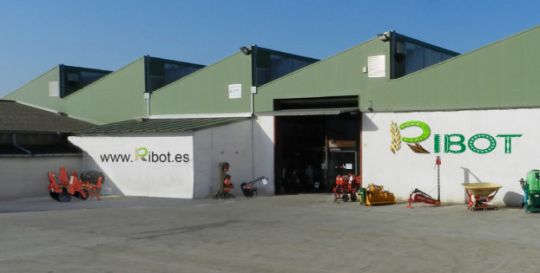ERP CECOGEST for farm machinery companies
Comprehensive CECOGEST ERP for a farm machinery company


Implementation of the CECOGEST ERP, accounting, human resources and machinery, in order to optimise production processes. Addition of a new machine structure module.
Ribot Farm Machinery
CECOGEST for farm machinery companies
Initial situation
In 2014, the company got in touch with us upon the recommendation of a client of ours. Their problem lay in the need to efficiently manage company tasks without having to repeat them. They had another application but it did not meet their needs.
Diagnosis / keys to the project
The company was engaged in the sale, repair and maintenance of farm machinery and the sale of all kinds of equipment and products for the agriculture and forestry industries.
The company had the needs common to all: preparing quotes, creating orders for products that were out of stock in order to fulfil quotes, entering products ordered, delivering the products included in the quote, billing the amount quoted, managing cash flow, and keeping stock under control. Aside from the sale of products, the company also had a machinery repair and maintenance division, which involved keeping track of tasks performed during repairs or servicing of the machinery.
One peculiarity was that they needed to have a machine structure module where, starting with a certain basic machine, the program could show the different options available to configure the final machine. They also need to know the traceability of the machinery sold, purchases, sales, repairs and maintenance.
Solution and benefits
The solution was to implement Cecogest ERP with the general modules for human resources, machinery resources and accounting. By using the ERP and its modules, we reduced the repetition of tasks to be performed. At the same time, we programmed a new machinery structure module.
The sequence implemented was as follows: Preparation of quotes, with the structure module in place when writing a quote for a machine, the program provided them with the different features and accessories that could be added. This made it possible to avoid forgetting or making a mistake when choosing a feature or accessory that couldn't be added to the machine they were writing the quote for. Creation of orders for suppliers for the items necessary for the sale which they did not have in stock. Receipt of goods, purchase delivery note, based on the order to the supplier. Generation of the supplier invoice based on the delivery note entered. Payment of the invoice received and its automatic posting. With this sequence, they were able to control the purchasing area, products ordered, products pending receipt, delivery notes received, incoming goods to the warehouse, delivery notes pending invoice receipt, entry of purchase invoices, invoices pending payment, and payment of the invoices. Once the goods were available, they were delivered with delivery notes generated based on the quote. The delivery note could be billed directly or billed using the quote. The invoice was collected and posted automatically. With this sequence they were able to control the sales area, quotes pending fulfilment, quotes fulfilled, outgoing goods from the warehouse, quotes pending billing, invoices created, invoices pending collection and collected invoices.
The repairs to be carried out on the machines were entered in the repairs submodule. The items used and the number of hours worked by the workmen were linked to the repairs. With this tool, the cost of both materials and labour was shown on the invoice. It is also used for the traceability of repairs to the machine.
By performing these tasks, purchase management, sales management, cash flow, the warehouse, the actual costs for the work carried out and sales, the hours worked by each workmen, etc. were kept under control.